GUIDE
What Does VR Training Actually Cost? A Clear-Cut Guide to Your Investment
Explore the financial side of immersive learning—what it really costs to bring VR training to life, and how to maximize your investment in XR technologies.

Written by Lorne Fade & Roni Cerga
Last updated on Aug. 5, 2025
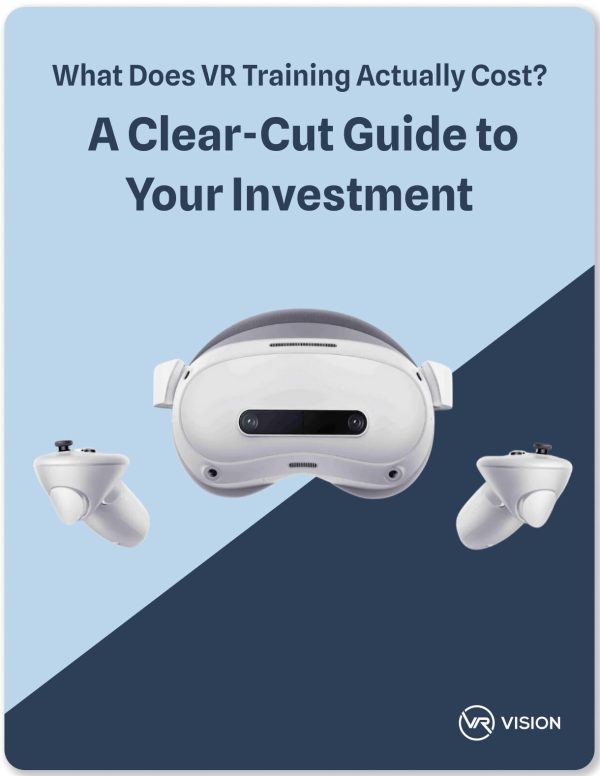
Executive Summary — KEY TAKEAWAYS
-
VR Training is Accelerating, Not Slowing Down
With the global market expected to hit $45B by 2027, VR training is proving itself as a scalable, high-impact alternative to traditional methods. -
VR Training Development Costs Vary Widely by Delivery Model
Out-of-the-box VR training is the most affordable, driven by user or device count. Self-serve authoring costs more in team time and effort. Custom VR is the most expensive, with major investment in design and development. -
Major Cost Drivers Include Custom Assets, Integrations & Support
Expenses are driven by 3D/360° content creation, LMS/API integrations, multiplayer features, and ongoing support—especially when targeting standalone VR hardware. -
Strategic Partners Like VR Vision Cut Costs Without Cutting Corners
Leveraging VR Vision’s SDK, skilled team, and streamlined workflows for standalone asset creation such as expert 3D modelers, 360° videographers, and project managers can reduce development time and costs by up to 60%.
Imagine revolutionizing your training programs with immersive VR experiences that boost engagement and retention. But what investment does this innovation require? Our comprehensive guide demystifies the costs associated with VR training, empowering you to make informed decisions.
Between supply chain hiccups, shifting geopolitical alliances, and the unstoppable rise of remote work, “business as usual” seems like a relic of the past. But amid this turbulence, one sector is speeding ahead—you guessed it, VR training. The proof is in the numbers; Allied Market Research projects the global VR training market could soar to $45 billion by 2027, showing that immersive tech isn’t just a shiny gadget—it’s a practical and strategic investment. Supporting this, PwC’s findings reveal that employees trained with VR complete courses four times faster than their classroom-based counterparts. Learning by doing is in, and it sticks. So, the question is: In a world where nothing feels certain, are you ready to invest in a training approach that might be the closest thing to a sure bet?
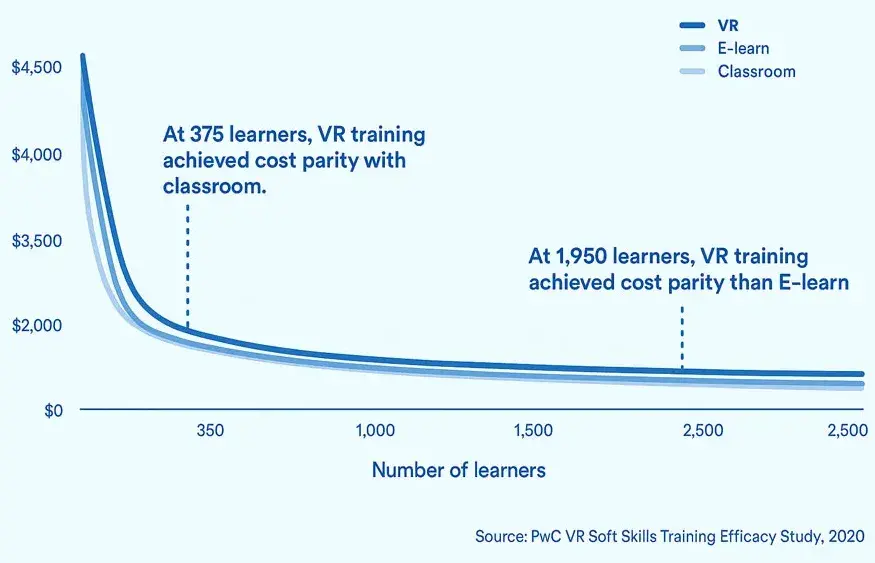
Getting Started: What This Guide Covers and Why It Matters
This guide is designed for decision-makers, L&D professionals, and IT teams who are seeking a clearer understanding of the financial implications of virtual reality training. It covers key cost considerations—from the creation of 3D assets and user interactions to multiplayer capabilities and quality assurance, while emphasizing the unique requirements of learning and development (L&D) courses.
These specialized needs include precise tracking of user performance, LMS integrations, and adherence to industry-specific security and compliance standards. Each of these factors can influence both initial and recurring costs, making this guide an essential resource for organizations looking to invest in VR training solutions that align with their strategic, operational, and budgetary goals.
For a visual overview of VR Training Costs please check out our infographic here: https://vrvisiongroup.com/vr-training-costs-infographic

Custom VR Development
$150,000-$300,000
Self Serve
$75,000-$150,000

Out of The Box
$25,000-$35,000
Table of Contents
Breaking Down the True Cost of Custom VR Development
When it comes to custom VR development costs, the upfront investment translates directly into lasting value. But how does your investment break down beyond just the visuals and interactivity? Behind every immersive experience lies a well-orchestrated network of project management and professional services that ensures your virtual reality training initiative is seamless, secure, and scalable. Dive deeper to discover how expert management, strategic planning, specialized support, and robust integrations combine to make your VR investment successful and future-proof.

Professional Services
In VR development, agile project management is crucial for ensuring that the entire process—from conceptualization to delivery—runs smoothly. It involves a range of activities, including overseeing the project timeline, coordinating between teams, and handling changes that arise during production. Professional services often complement these efforts by providing specialized expertise in areas like IT security, networking, and integrating various technologies into the VR ecosystem.
Professional Services
$15,000-$30,000
200-400 hours
Project Management
Change Management
Internal Training
Security Audit
Professional services are designed to support clients through every phase of their VR training journey; from initial planning and stakeholder alignment to deployment, internal capability building, and post-launch optimization. The following sections outline the strategic and operational support required to guarantee that the immersive solution delivers measurable impact and integrates effectively into your organizations digital transformation goals.
Project Management
Effective project management ensures that all phases of the VR development process, from pre-production to post-launch, are executed efficiently and within budget. This encompasses the management of the design, development, testing, and delivery stages, with close attention to deadlines, resource allocation, and risk management.
- On-Site and Remote Management: Whether managing on-site teams or working remotely, project managers coordinate the workflow, ensure timely communication, and facilitate decision-making processes.
- Storyboarding and Workflow Mapping: Storyboarding is used to visually map out the user experience and interactions within the VR project. Workflow mapping ensures that all tasks are logically sequenced, from asset creation to final testing. This helps to identify potential bottlenecks and inefficiencies early on.
- Design Documentation: Project documentation includes detailed technical and creative specifications that guide all team members. This document provides clear direction on the visual, functional, and technical aspects of the VR experience, ensuring that all stakeholders are aligned.
Time: 50 – 150 Hours
Cost : $5,000 – $10,000
Professional Services: 30%
Change Management
Change management consulting in VR projects ensures that any changes, whether due to shifting project scope, client feedback, or unforeseen challenges, are handled efficiently. This service focuses on minimizing disruptions, mitigating risks, and ensuring that the project remains aligned with business goals and user expectations.
- Change Control Process: Establishing a formal change control process to handle alterations to scope, timeline, or budget while keeping stakeholders informed.
- Risk Assessment: Identifying potential risks tied to changes and mitigating them through proper planning and resource allocation.
- Stakeholder Communication: Maintaining clear communication with stakeholders throughout the change process, ensuring they understand the impact of changes on the overall project.
Time: 20 – 40 Hours
Cost : $1,500 – $3,000
Professional Services: 10%
Internal Training
Training is essential for ensuring that all personnel are equipped with the necessary knowledge to operate and support the VR system effectively. This can include training for project managers, developers, designers, and end-users. Help desk support and trainers play a key role in providing continuous assistance post-launch.
- Training the Management: Project managers need training to understand the complexities of VR systems and their integration with existing infrastructures. This includes high-level training on managing VR projects, understanding technical workflows, and overseeing user engagement.
- Help Desk: Help desk services ensure that the project team and end-users can get assistance with technical issues, ensuring minimal downtime or disruptions.
- Training the Trainers: For larger projects, training the trainers ensures that internal teams are equipped to deliver ongoing training and troubleshooting to users once the system is in place. This includes VR hardware setup, software updates, and user interface troubleshooting.
Time: 10 – 20 Hours
Cost : $1,500 – $3,000
Professional Services: 10%
Security Audit
VR systems need to be secure, especially if they involve sensitive data or interact with existing business infrastructure. IT security, networking, and integration services are essential to safeguard the environment and ensure smooth connectivity.
- IT Security: Securing VR systems involves setting up firewalls, encryption, and ensuring data privacy. This service also ensures compliance with relevant data protection laws.
- Networking: Ensuring the VR systems are seamlessly connected and scalable, whether it’s for multi-user experiences, remote access, or data transfer.
- Integrations: Integrating the VR system with other business systems such as learning management systems (LMS), customer databases, or external hardware like motion sensors and controllers.
- Audit Support: Conducting regular audits to ensure that the VR system meets compliance standards and performs optimally.
Time: 100 – 150 Hours
Cost : $5,000 – $15,000
Professional Services: 50%
Digital Asset Creation
Digital Asset Creation in Virtual Reality Development can be approached in two distinct ways: through the production of 360 Video or by creating 3D models (also known as Digital Twin creation). While this is the bulk of digital asset creation, the User Interface, localization and sound also play a key role in content and cost.
Digital Asset Creation
$15,000-$30,000
250-800 hours

360 Video Production
$15,000-$25,000
150-300 hours
Pre Production
Filming
Post Production
Digital Twins
$30,000-$60,000
500-1000 hours
Visual Provisions
Grey-box Blocking
3D Modeling
Texturing
Detailing
360 Video Production
360 Video Production involves capturing immersive, panoramic footage that allows users to experience real-world environments in a fully navigable format. This method is often used to create engaging, interactive learning experiences by bringing real-world scenarios directly into virtual space. The video is designed to provide an in-depth, real-world perspective in a manner that traditional video cannot.
There are two types of 360° video production: stereoscopic and monoscopic. Stereoscopic 360° video uses two slightly different angles per frame to create depth, providing a more immersive, lifelike experience.
Monoscopic 360° video captures the scene from a single viewpoint, offering a flat, yet still immersive, view. Stereoscopic production is more complex and time-consuming, requiring extra cameras and careful post-production to achieve natural depth effects.
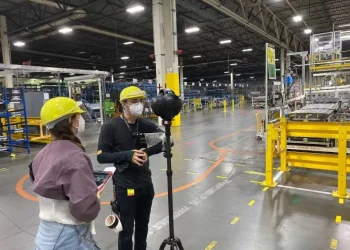
Pre Production
Pre-production, where learning objectives are defined, and filming processes are planned to align with those goals. Essential preparations include project planning, shot list creation, actor briefings, and gathering supporting multimedia. This crucial step ensures a smooth production process, minimizing delays and resource waste.
- Storyboarding: This initial phase creates visual plans for every scene and camera angle, mapping out the narrative and spatial flow to ensure each immersive perspective is considered. It allows creative teams to pre-visualize transitions and scene compositions critical for a smooth production process.
- Project Planning: Project Planning (Gantt): Using a Gantt chart, this phase organizes tasks, timelines, and resources, ensuring that every department—creative, technical, and logistical—is coordinated. It establishes clear milestones and deadlines to manage the multi-faceted process of 360 video production.
- Shoot List: The shoot list acts as a detailed roadmap, outlining every shot and scene required to capture the full 360 environment. It ensures nothing is overlooked on set, streamlining the filming process by clearly specifying locations, camera location, voice and sound capture and necessary equipment.
- Stage Prep: Preparation sessions involve rehearsals, briefings, and technical run-throughs to familiarize actors and crew with the unique challenges of working in an immersive environment. This ensures that every participant is aligned with the project’s creative vision and technical demands.
Time: 20 – 40 Hours
Cost : $1,000 – $2,000
360 Video Production: 5%
360 Filming
During filming, scenes are staged to maximize immersion, utilizing specialized 360-degree cameras and directional audio to enhance realism. Technical direction ensures smooth transitions and optimal learner engagement, while subject matter experts oversee and guide the actors to ensure accuracy and alignment with the training objectives.
- Travel: Travel expenses in 360 video production can vary significantly based on the location and scale of the shoot. These higher costs encompass airfare, accommodations, per diems, and local transportation in the destination country. Factors influencing these expenses include the number of crew members, duration of the shoot, and the distance to the filming location.
- Scene Setup: This stage involves arranging cameras, lighting, and other equipment to optimally capture every angle of the scene. It ensures that the environment is correctly lit and framed to create a balanced, immersive visual narrative.
- Technical Directing: This stage involves arranging cameras, lighting, and other equipment to optimally capture every angle of the scene. It ensures that the environment is correctly lit and framed to create a balanced, immersive visual narrative.
- Video & Audio Recording: This component focuses on the synchronized capture of high-quality video and spatial audio, essential for a fully immersive 360 experience. It requires precise coordination to ensure that visual and sound elements are recorded seamlessly across all directions.
- Digital Image Transfer: Digital image transfer involves moving high-resolution footage from the cameras to secure storage systems for editing. Given the multiple camera feeds in 360 video production, this process is crucial for maintaining data integrity and organization.
Time: 20 – 40 Hours
Cost : $4,000 – $8,000
360 Video Production: 35%
Post Production
In Post-production, advanced techniques like stereoscopic stitching, spatial audio processing, and interactive overlays refine the final product. Editing ensures clarity, while sound synchronization and visual composition enhance the overall training effectiveness. Each phase plays a critical role in producing high-quality 360-degree training content, with costs varying based on the complexity and interactivity of the project.
- Stereoscopic-Stitching: In post-production, stereoscopic stitching merges multiple video feeds into a seamless 360-degree panorama. This technical process corrects lens distortions and aligns overlapping footage to create a fluid, immersive visual experience.
- Audio & Sound Processing: Audio processing refines and synchronizes the captured sound, applying noise reduction, equalization, and spatial mixing to complement the immersive visuals. This ensures that every sound cue is in harmony with the on-screen action.
- Composition & Effects: During composition, all visual elements—including raw footage, graphics, and effects—are integrated to enhance the storytelling. This phase allows for creative enhancements and polished transitions that elevate the final product’s cinematic quality.
- Review & Final Render: During composition, all visual elements—including raw footage, graphics, and effects—are integrated to enhance the storytelling. This phase allows for creative enhancements and polished transitions that elevate the final product’s cinematic quality.
Time: 50 – 100 Hours
Cost : $5,000 – $15,000
360 Video Production: 60%
Digital Twins (3D Asset Creation)
The process of 3D asset creation for VR training primarily revolves around recreating real-life environments with interactable equipment, tools, and machinery.
This approach differs from standard 3D art as it places less emphasis on conceptualization and creativity and instead prioritizes the accurate replication of real-world elements. Furthermore, a significant focus is placed on optimizing the assets to ensure accessibility on standalone VR headsets.
For more information about our digital twin creation process check out our dedicated page on Digital Twins.
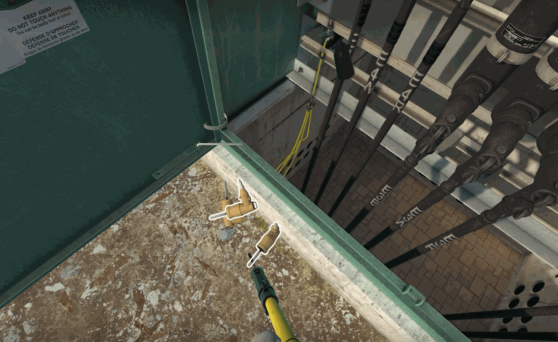
Visual Provisions
Before modeling begins, reference materials must be gathered and organized to ensure accuracy and efficiency. This phase involves two primary approaches:
- Client Provided CAD/BIM Files: If the client supplies existing CAD or BIM data, the 3D team must organize, optimize, and convert these files for compatibility with modeling software. The complexity and volume of the data influence the cost.
- On-Site Visual Data Capture: If no CAD data is available, the 3D team travels to the location to capture photo references, LiDAR scans, or point cloud data for modeling. Travel and lodging significantly impact costs, particularly for international shoots or remote locations.
Time: 20 – 40 Hours
Cost : $1,500 – $3,000
Digital Twins: 5%
Greybox Blocking
Before detailed modeling begins, the scene’s basic structure, scale, and distribution of elements must be established. This phase is crucial for ensuring spatial consistency and functionality within the 3D environment. It involves two primary considerations: Scale and Geometry and Spacing & Distribution.
- Scale & Geometry: This step involves setting up the foundational proportions and spatial relationships within the scene to ensure consistency and correct perspective.
- Spacing & Distribution: This step focuses on how objects are positioned within the environment, ensuring that they are logically distributed and spaced.
Time: 50 – 100 Hours
Cost : $4,000 – $8,000
Digital Twins: 15%
3D Modelling
After the greybox blocking phase, the scene transitions into detailed 3D modeling. This is where the basic shapes are replaced with high-resolution models that include intricate details, complex geometry, and refined structure.
- Asset Creation: Refine the basic geometry by adding intricate details, such as small features, surface deformations, and any other specifics that will contribute to the final look of the object. This includes adding fine details like stitching, wrinkles, or other surface features for organic models, or bolts, panel lines, and other mechanical details for hard-surface models.
- Topological Refinement: Ensuring that the geometry is clean and optimized for further steps, such as rigging or animation. Proper edge flow and polygon count balance are essential for performance in real-time applications.
- Level of Detail (LOD): Creating different versions of models at varying levels of detail for performance optimization in different scenarios (e.g., background elements may have lower detail than foreground assets).
Time: 150 – 300 Hours
Cost : $15,000 – $20,000
Digital Twins: 30%
Texturing
Once the 3D models are complete, the next step is texturing. Texturing adds realism and artistic style to the models by applying materials, creating textures, and setting up the appearance of surfaces.
- UV Mapping: Unwrapping the 3D models to create a 2D representation for applying textures efficiently. High-quality UV mapping ensures that textures are applied without distortion, improving the overall look of the model.
- Texture Painting & Materials: Artists create and apply texture maps (e.g., diffuse, normal, specular, bump) to define the look and feel of each surface, from realistic skin to weathered metal. Materials are also configured to control light interaction.
- PBR Workflow: Physically-based rendering (PBR) materials are fine-tuned to ensure realistic lighting and reflections across environments. This step ensures consistency and believability across scenes.
Time: 150 – 300 Hours
Cost : $15,000 – $20,000
Digital Twins: 30%
Detailing
Once detailed 3D modeling and texturing are complete, the next phase focuses on enhancing the visual fidelity and interactivity of the assets. This phase involves Refining Geometry, Adding Animations, and Particle Effects, which contribute to realism, movement, and environmental immersion. Although there are many components to Detailing, the work required is typically much less then Texturing and 3D Modeling.
Refining Geometry:
This step involves finalizing the model’s details by improving structural accuracy, optimizing topology, and enhancing surface details for better visual quality and performance. This process is split into three unique phases:
- Surface Detailing: Fine-tuning the model by adding micro-details such as scratches, pores, engravings, and wear-and-tear effects. Ensures models hold up well in close-up shots and high-resolution renders.
- Topology Optimization: Cleaning up geometry to maintain smooth edge flow while keeping polygon counts efficient for performance. Essential for real-time applications and animation readiness.
- Subdivision and Sculpting Refinement: Adding extra detail through high-resolution sculpting where necessary, followed by baking details into optimized geometry. Common in character models and organic assets requiring intricate surface features
Animations:
Animation brings static models to life by defining their movements and interactions. Whether for characters, props, or environmental elements, animations ensure fluidity and realism in the final production. There are different types of animations and not all are required but we’ll cover the most used methods.
- Rigging & Skinning: Setting up a skeletal structure and binding the model to ensure natural movement. Essential for characters, creatures, and articulated mechanical objects.
- Motion Capture & Keyframe Animation: Applying motion data or manually animating movements such as character actions, prop interactions, or mechanical functions. Motion capture accelerates realistic animation, while keyframe animation allows for custom control and artistic adjustments.
- Physics-Based Movements: Implementing physics-driven animations such as cable/rope simulation, secondary motion (e.g., smoke, liquids), or environmental responses (e.g., wind-driven objects).
Particle Effects:
Add dynamic environmental and visual enhancements that improve immersion and simulation realism. These effects are used to simulate natural elements, weather effects, and interactive responses.
- Environmental Effects: Simulating natural elements such as rain, snow, fire, fog, smoke, dust, or water splashes. Enhances scene atmosphere and realism.
- Dynamic Interactions: Creating effects that respond to player actions or environmental conditions, such as electrical sparks, fire, dust or smoke that reacts to user movement.
Time: 50 – 100 Hours
Cost : $5,000 – $10,000
Digital Twins: 20%
VR Development
The development of a project is an intertwined beast of multiple components that are all an essential part of creating an engaging experience for users comprising of: Interaction Design, UI, Multiplayer / Networking, Animation & VFX, Localization and sound effects. Each component plays a key role in ensuring smooth interaction, crisp multiplayer, immersive audio & language, beautiful VFX and diegetic UI. Costs vary depending on complexity, platform requirements, and project scale.
VR Application Development
$100,000-$200,000
1500-3000 hours
Interaction Design
Animation and VFX
Procedures & Steps
Localization
User Interface
Sound Effects
Multiplayer
VR Development encompasses the core technical components that bring immersive training experiences to life, each carefully engineered to meet enterprise standards of interactivity, realism, and scalability. From Interaction Design and Procedural Workflows to User Interface architecture, this offering ensures that every user action is meaningful, guided, and intuitive. Multiplayer capabilities are developed to enable collaborative learning and team-based scenarios, while Animations and Visual Effects enhance realism and user immersion through responsive, cinematic feedback.
Localization support ensures global deployment through translated interfaces and region-specific adaptations, while VFX and SFX integration provide audio-visual depth that reinforces behavioral cues and user engagement.
The following sections will break down these components to reveal how they align with organizational goals for impactful, scalable, and culturally responsive VR training solutions.
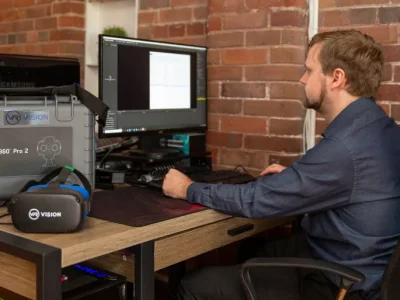
Interaction Design
Interaction design in virtual reality focuses on how users engage with digital environments through intuitive controls, feedback systems, and immersive cues. It involves crafting natural user pathways, object interactions, gesture recognition, and intuitive responses, ensuring the overall experience feels responsive, immersive, and engaging for trainees. This step is critical for learning outcomes and long-term user retention.
Time: 500 – 1,000 Hours
Cost : $35,000 – $70,000
Development: 35%
Procedures & Step Design
Here, we clearly define the scale and magnitude of a training process. Determining the quantity and intricacy of these steps requires collaboration between clients and developers to ensure project scope, accuracy and relevance.
- Continuous client feedback through test applications ensures alignment with training goals.
- Procedures are broken down into sections called steps, allowing users to learn in a digestible manner.
Time: 300 – 600 Hours
Cost : $20,000 – $40,000
Development: 20%
User Interface (UI)
UI/UX Design: This focuses on refining and creating immersive UI elements such as 3D menus, buttons, and interactive objects within the virtual environment. It requires careful attention to user experience, ensuring that interface elements are intuitive, accessible, and enhance the overall virtual environment. It is a continuous cycle of designing and developing throughout the lifetime of the project.
- UI Element Design: Crafting the visual appearance of interactive elements, such as buttons, sliders, and menus, while ensuring they fit seamlessly within the VR space.
- Interaction Design: Creating the logic and flow of how users interact with UI elements. This may include gaze-based interactions, or controller-based inputs.
- Immersive UI Prototyping: Testing initial UI designs in the VR environment to ensure they maintain usability while delivering an immersive experience.
Time: 50 – 100 Hours
Cost : $5,000 – $10,000
Development: 5%
Multiplayer / Networking
Multiplayer functionality in VR allows multiple users to share the same virtual space for collaboration, training, or simulation purposes. This includes shared avatars, real-time voice chat, data synchronization, user presence tracking, and authoritative server control to keep environments stable across clients. A combination of Photon Fusion and our internal Networking SDK suite allow for such spaces.
1. Real-Time Voice Integration
Integrating real-time voice functionality allows users to communicate seamlessly within the virtual environment. This feature is crucial for collaborative training scenarios, where clear audio communication enhances teamwork and immersion.
- Implements voice controls that allow users to mute and deafen other participants while synchronizing these settings across all clients.
- Utilizes Photon Voice for reliable real-time audio streaming and communication.
- Cost determined by QA and setup since it works by default and doesn’t require much additional setup.
2.Server-Client Architecture Setup
Setting up a robust server-client architecture ensures that data and interactions are managed efficiently, minimizing latency and maintaining stable connections during multiplayer sessions.
- Utilizes Photon Fusion for most projects, with PUN as an alternative for legacy projects.
- Implementing a custom layer to support core systems such as procedure management, interactions, and deep linking.
- Support for multiple transport protocols (TCP, UDP, WS, WSS) and dedicated cloud servers.
- Cost determined by QA and setup since it works by default and doesn’t require much additional setup.
3. User State Syncing and Lag Compensation
User state syncing involves continuously updating user positions, actions, and interactions across clients to maintain consistent experiences. Lag compensation techniques help mitigate discrepancies caused by network delays.
- Implements data optimization techniques such as area of interest and reducing data size where possible.
- Utilizes interpolation on visual elements to smooth out discrepancies, particularly when introducing new features.
- Cost is determined by complexity of project, and maximum player capacity. If the training course is simple and doesn’t require many interactions; the procedure is short; or the max room size is small; the less time it will take to optimize states reduce lag.
4. Procedure Synchronization
Procedure Synchronization is a core function of our networked environments. Without it, users would not be able to experience training together in a cohesive manner. It ensures that all participants are in sync and can collaborate or progress through training steps as a unified group.
- Users can progress through training together, either independently or as a group, based on the task requirements.
- Continuously monitoring the progress of each user’s procedure ensures that the training flows according to plan, with accurate synchronization across all participants.
- Cost is determined by complexity of procedure and its non-linearity. If the procedure is simple, the less time it will take synchronize.
5. Avatar Presence and Visibility Management
Managing avatars’ presence and visibility is essential for representing users accurately within the virtual space. This component ensures that avatar movements and interactions appear smooth and lifelike to other participants.
- Balances visibility to allow players to see each other while ensuring important training elements remain visible.
- Implements real-time player distance detection to fade avatars when they are in close proximity, improving spatial awareness.
- Synchronizes key animations, such as finger movements, to enhance social interactions.
6. Lobby Systems
Lobby systems allow users to create, join, and manage multiplayer sessions. These systems often include features such as player matchmaking, team assignment, and session persistence.
- Allows players to wait for others before starting training and interact in the same space before beginning.
- Determines the type of training based on deep link parameters, enabling customized session setups.
- Facilitates seamless transitions from the lobby to the active training environment through deep link data from our main menu.
Cost determined by QA and setup since it works by default and doesn’t require much additional setup.
7. Interaction Networking
Synchronized interactive objects between clients ensure that changes made by one user are reflected for others in real time. This is critical for training environments where collaborative manipulation of objects or important demonstration are required.
- Physics and other visual elements are synchronized when necessary to ensure a smooth, interactive experience.
Time: 250 – 500 Hours
Cost : $25,000 – $50,000
Development: 25%
Animation & VFX
Enhances interactivity through dynamic object manipulation and immersive visual effects. Objects respond to procedural systems or player input, creating lifelike interactions. Particle effects simulate organic phenomena—such as fire, smoke, and electricity—to replicate the unpredictability of real-world environments.
- Animation: Animation defines transformation changes in 3D space by interpolating between key nodes, with precise control over local timing parameters to generate movement.
- VFX & Particles: Add dynamic environmental and visual enhancements that improve immersion and simulation realism. These effects are used to simulate natural elements, weather effects, and interactive responses.
Time: 50 – 100 Hours
Cost : $5,000 – $10,000
Development: 5%
Localization
Translation & Text Adaptation: This phase involves translating text for VR menus, UI elements, tutorials, and instructional content. It includes ensuring legibility in 3D space and adjusting text size to fit appropriately within the VR environment.
Voice Over Integration: This involves recording and integrating voice overs for menus, tutorials, and other instructional content in different languages. Depending on the approach, voice overs can be recorded by professional voice actors or generated using AI. This step ensures the VR experience feels immersive and localized for each region.
Voice Over Recording (Human or AI):
- Human Voice Actors: Hiring professional voice actors to provide authentic, region-specific voice overs for the translated text and for the non-player characters.
- AI-generated Voice Overs: Using AI tools to generate synthetic voice overs for narrations or guidance rather than characters.
Time: 50 – 100 Hours
Cost : $2,500 – $5,000
Development: 5%
Sound Effects Design
This phase focuses on designing and creating sound effects that enhance the immersive VR training experience. It includes generating sounds for machinery, environmental effects, tool usage, interactions, and other elements relevant to the training scenario. These sounds play a critical role in creating realism and guiding the user’s actions within the VR environment.
- Environmental Sound Design: Crafting ambient sounds that simulate the environment, such as machinery running, background noise, and other spatial sounds that immerse the user in the virtual world.
- Interaction Sounds: Creating sound effects for interactions with objects, tools, and equipment. This includes the sounds of buttons being pressed, tools being used, and other actions that occur during the training process.
- Foley: Recording custom sound effects for specific actions, such as footsteps, clothing movement, or specific object interactions that help make the virtual world feel alive and responsive.
- Spatial Sound Design & Implementation: Ensuring that all sound effects are properly spatialized, meaning they react realistically based on the user’s position and movement in the VR space. Using 3D audio techniques, sounds dynamically change in volume and direction to create a natural sense of distance, depth, and positioning, improving immersion and user awareness.
- Sound Optimization: Integrating and optimizing sound effects within the VR environment to maintain performance and responsiveness. This includes balancing audio levels, reducing latency, and ensuring sounds trigger at the right moments.
Time: 50 – 100 Hours
Cost : $5,000 – $10,000
Development: 5%
Integrations
Integrating VR training with Learning Management Systems (LMS), vision portals, and analytics platforms like Cognitive3D enables tracking of key learning metrics such as completion rate, time-in-module, and behavior-based assessments. This integration ensures your training ecosystem remains centralized and measurable, with data pipelines feeding into platforms like SCORM, xAPI, or LTI-compliant systems.

Integrations
$5,000-$15,000
60-150 hours

SCORM/xAPI and SSO

LMS-Ready
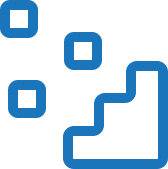
Data Visualization
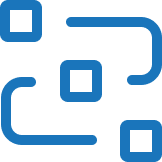
Webhook Support
Key Components for Integrations:
- SCORM/xAPI integration
- SSO & authentication setup
- Webhook/API communication bridges
- Data visualization
Major Cost Factors for Integrations:
- Complexity of LMS or analytics API
- Number of tracked KPIs and user events
- Whether real-time data sync is needed
- Frequency and depth of data collection
Maintenance and Support
Maintenance and support ensure that VR training remains up-to-date, bug-free, and compatible with the latest hardware and OS updates. This includes system patches, asset upgrades, and dedicated helpdesk support for technical issues, as well as routine performance monitoring and uptime assurance for multiplayer environments or integrated platforms.

Maintenance and Support
10% of Dev Cost
annual-recurring
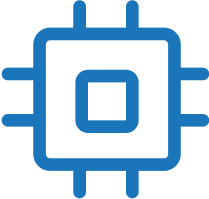
Platform Updates
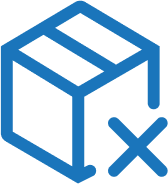
Error Resolution

Operational Support
Cloud Hosting
Key Components for Maintenance and Support:
- Technical support and bug fixing
- Platform compatibility updates (Quest, Pico, Windows, etc.)
- Backend monitoring and server maintenance
- Content updates and revisions
Major Cost Factors for Maintenance and Support:
- Number of environments and users
- Frequency of OS and platform updates (e.g., Meta Quest SDK)
- Custom support SLAs and guaranteed response times
- Frequency of user content updates
Comparing Costs: Out-of-the-Box vs. Self-Serve VR Authoring Tools
We won’t be diving deep into OTB or Self-Serve (DIY) solutions, but we will provide an overview of what they are and how their costs are structured. While we focus on other approaches, it’s important to acknowledge these solutions as they can serve as either an opportunity or an alternative cost consideration.
Out-of-the-Box VR Training
Some OTB VR providers also offer the ability to reconfigure or redevelop their baseline applications to accommodate more unique workflows. In these cases, the cost of customization aligns with the expenses outlined in the custom VR development section.
"OTB providers may offer Enterprise License Agreements (ELAs) or organization-wide licensing options, which can be a highly cost-effective solution and offers better cost predictability.”
Out-of-the-box (OTB) VR training refers to pre-developed, standardized VR modules that are ready for immediate deployment with minimal setup. These solutions are typically designed to cover common training scenarios—such as safety procedures, equipment handling, or soft skills—and are developed by specialized providers with industry expertise. OTB VR training is often delivered through flexible licensing models, such as per-user pricing, annual subscriptions, or enterprise licenses. The primary advantage of OTB solutions lies in their cost-effectiveness and speed of implementation.
Organizations can avoid the time and expense of custom development, while also benefiting from predictable pricing and proven outcomes. This makes OTB VR ideal for companies looking to pilot immersive training or meet urgent training needs without heavy investment.
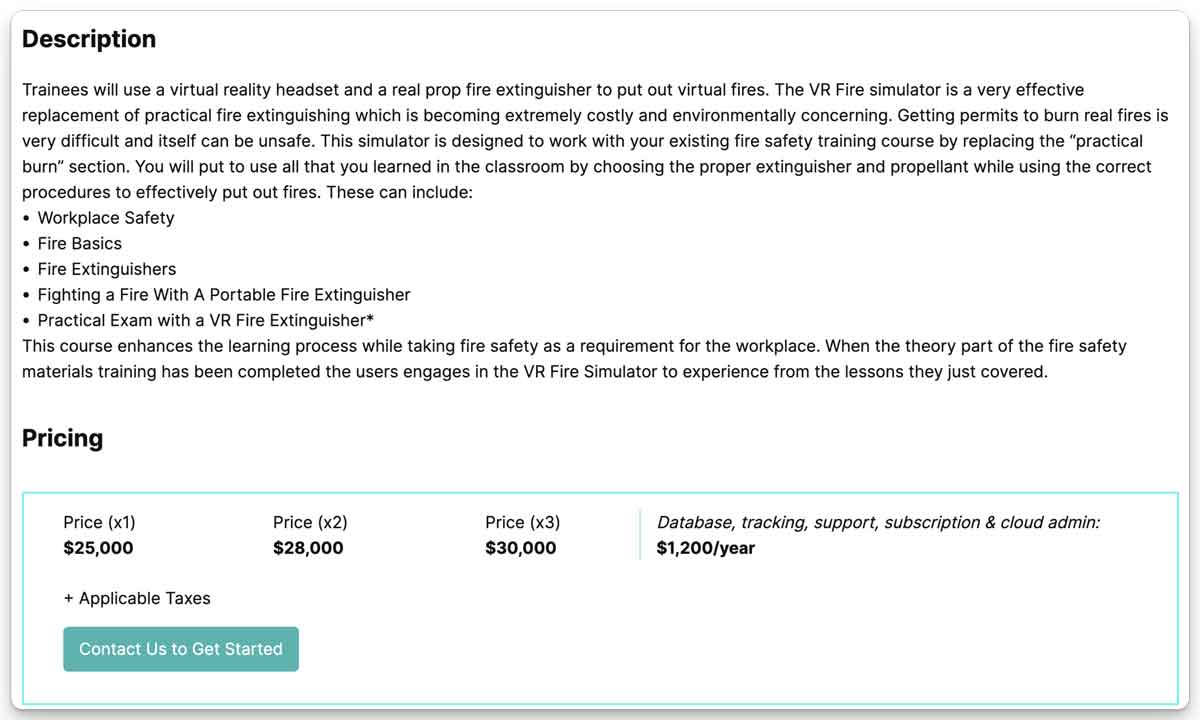
Advantages of OTB
Disadvantages of OTB
- Low startup cost
- Clear upfront deliverables
- Predictable total cost
- Lower reconfiguration expenses
- Minimal time required from internal team members
- Easy accessibility on consumer VR devices
Disadvantages of OTB
- Limited content and VR HMD compatibility
- Lacks enterprise workflow, branding, and expertise
- Inconsistent content quality
- Inconsistent user experience
- Missing integrations with LRS/LMS systems
- Lacks security features, single sign-on (SSO)
Self-Serve or DIY VR Authoring Tools
"One key similarity between authoring tools and custom VR development (unlike OTB solutions) is that they still require digital content creation, whether through 360° video or 3D modeling.”
Advantages of Self-Serve
Disadvantages of Self-Serve
- Enables organizations to quickly learn and use the system
- Offers greater control over content creation
- Cost-effective for large-scale deployments
- Facilitates rapid workflow changes
- Supports digital content creation via 360° video or 3D modeling
Disadvantages of Self-Serve
- Requires internal team for effective use and content creation
- Limited advanced features vs. custom VR development
- Potential challenges in scaling for orgs with smaller teams
- Estimating dev costs can be complex due to numerous variables
- Requires investment in training and support for internal users
Unlike OTB solutions, which typically charge per trainee, user, or device, most authoring tools charge based on the number of instructional designers using the system. This pricing model offers an advantage when the VR solution is deployed to a large number of users but can be a drawback for smaller teams.
Estimating VR development costs involves numerous variables. The example below provides a general framework, but each organization should calculate its own costs based on factors like the number of users, hourly wages, and additional expenses to gain a more accurate understanding of the total investment required.
For example, the average salary for instructional designers in the USA is $39/Hour or roughly $80k/yr.*
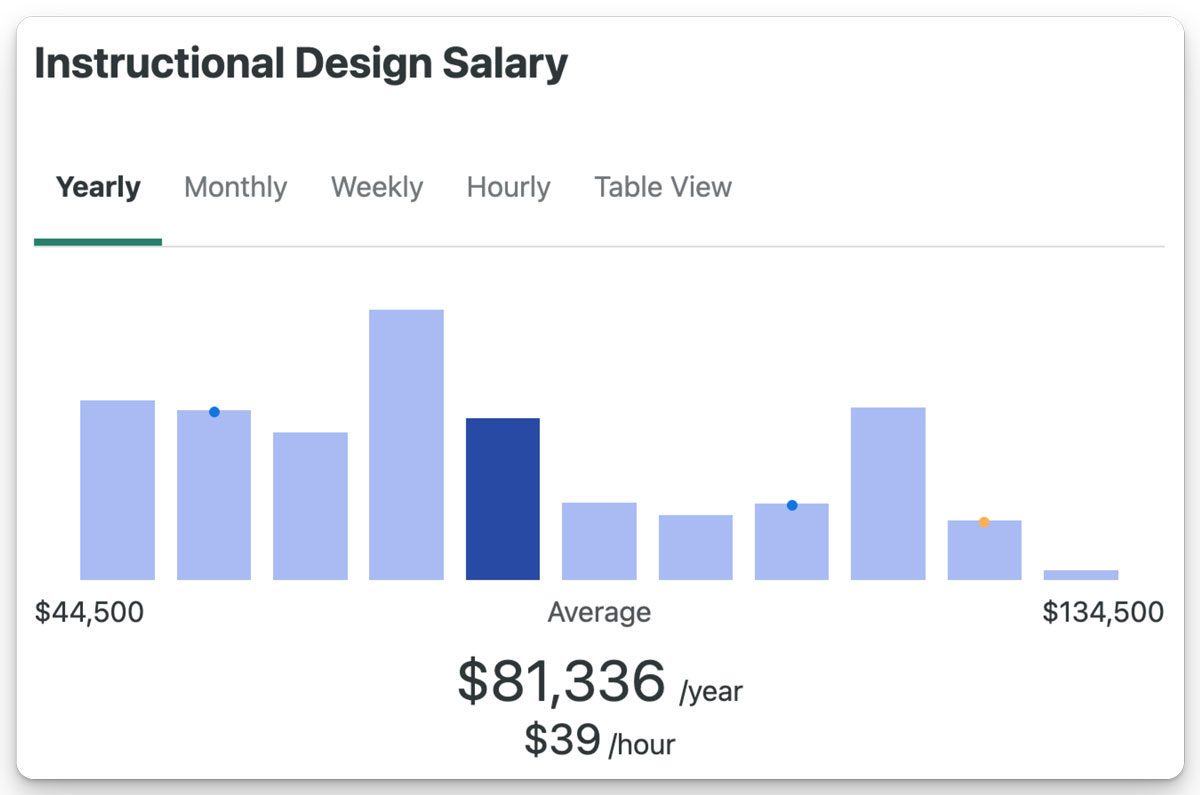
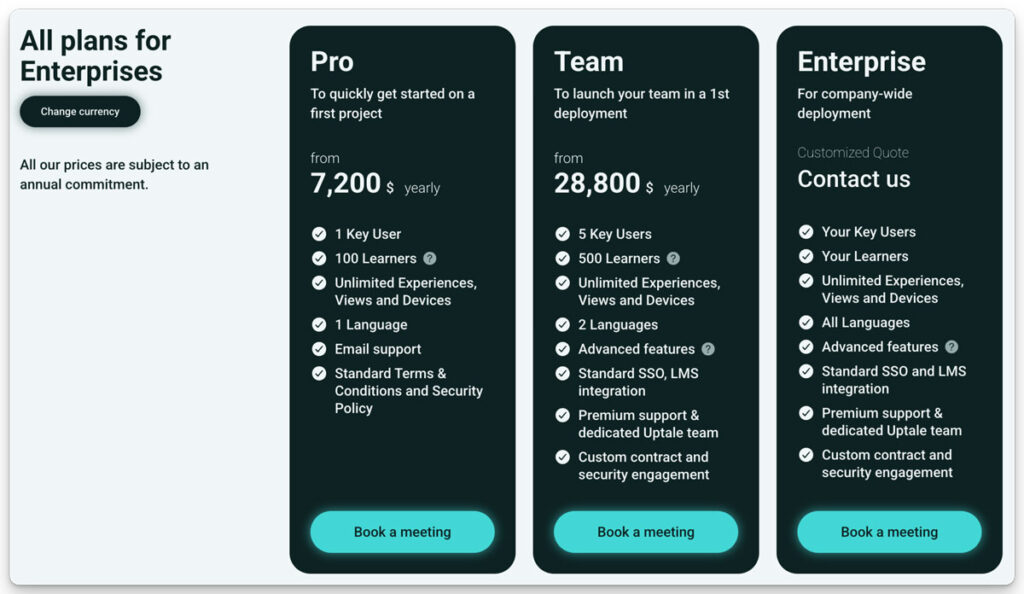
Self-serve VR authoring tools are a viable option for organizations with internal resources and team members who can learn to use these systems to create relatively simple scenarios, particularly in terms of workflows and multiplayer functionality.
These tools are ideal for organizations with the right skill set in-house and a need for greater control over their content, allowing them to make quick and easy workflow changes without relying on a service provider.
They also offer scalability for teams managing ongoing updates or iterating on training programs, making them a flexible solution for companies seeking long-term content ownership and adaptability.
ROI: Maximizing the Value of Your VR Training Investment
While understanding the costs associated with VR training is crucial, it’s equally important to recognize the substantial returns this investment can yield. Organizations across various industries have reported significant improvements in efficiency, cost savings, and employee performance after implementing VR training programs.
Key Benefits and ROI Metrics:
- Accelerated Learning: Studies have shown that VR learners can be up to four times more focused and 275% more confident in applying skills after training compared to traditional methods.
- Skill Acquisition: VR training enables employees to grasp complex concepts more quickly. For instance, Modis Training Technologies reported that VR training reduced semiconductor fabrication training time to one-tenth and halved the cost, ensuring consistency and quality across the workforce.
- Cost Savings on Training Resources: Traditional training often requires physical materials, dedicated spaces, and instructor time. VR training minimizes these needs, leading to substantial cost reductions. View our Toyota Case Study to see this in action first-hand.
- Improved Employee Performance and Retention: Companies like L’Oréal have integrated VR into their training programs, resulting in improved employee engagement and confidence.
- Enhanced Safety and Risk Management: In high-risk industries, VR allows employees to experience and react to hazardous scenarios in a controlled environment, reducing the likelihood of real-world accidents.
Calculate Your Potential ROI
To quantify the benefits of VR training for your organization, utilize our VR Training ROI Calculator. This tool helps you estimate potential cost savings, productivity gains, and overall return on investment based on your specific parameters.
Essential Questions for VR Development Cost Planning
How much does VR training cost?
The cost of VR training can vary significantly depending on the complexity of the program. On average:
Basic 360° video training modules: $10,000–$50,000+
Interactive VR simulations: $50,000–$150,000+
Enterprise-scale custom solutions: $150,000–$500,000+
SaaS pricing (per user/month): $30–$250/month depending on platform and content library access
Additional costs include:
- VR hardware ($400–$1,500 each)
- Project management & professional services ($35,000–$140,000+)
- Ongoing maintenance, support, and software updates
Source: VR Vision internal estimates and market comparisons; PwC’s 2022 VR Training Study; Accenture Digital Learning Research.
Is VR training cost-effective?
Yes—especially at scale. While initial costs are higher than traditional eLearning or classroom training, VR proves cost-effective long-term through:
Faster learning times: PwC found learners in VR completed training 4x faster than classroom learners.
Higher retention: Knowledge retention rates increase up to 75% vs. 10% in traditional learning (Source: PwC).
Fewer repeat incidents: Safer practice environments reduce errors in high-risk jobs.
Scalability: Once developed, VR content can be reused and scaled with minimal added cost.
What are the advantages of VR training?
Increased engagement and retention: Immersive experiences lead to better memory encoding.
Safe learning environments: Trainees can practice dangerous or complex tasks without real-world risk.
Consistent, standardized training: Ensures everyone receives the same high-quality instruction.
Real-time feedback and data tracking: Helps improve performance with analytics and adaptive learning.
Cost savings at scale: Reduces travel, equipment wear-and-tear, and instructor fees.
What are 3 disadvantages of VR training?
High upfront costs: Custom content development and hardware can be expensive initially.
Hardware limitations: VR headsets may require updates or replacement and can cause discomfort or motion sickness for some users.
Limited applicability: Not all soft skills or theoretical concepts benefit from VR; traditional or hybrid methods may be more effective.
How can I effectively budget for VR training?
Effective budgeting for VR training starts with a clear strategy and a realistic outlook on both upfront and long-term costs.
Before locking in your numbers, use this quick checklist:
- Are your VR training goals clearly defined?
- Is the proposed budget aligned with the project’s complexity and scope
- Have you factored in long-term operational costs (e.g., updates, support, hardware replacements)?
- Have you established measurable success metrics (KPIs, ROI benchmarks, etc.)?
Planning with these in mind ensures your investment is not just accurate—but impactful.
Cut Costs, Not Corners: The VR Vision Advantage
At VR Vision, we deliver the smartest investment in immersive training. Our all-in-one approach, proprietary SDK, and in-house team give organizations a faster, higher-quality, and more cost-effective alternative to traditional or self-serve VR solutions.
Professional Services that Actually Save You Time
We’ve refined every step—from storyboarding to trainer onboarding—into a lean, documented process that reduces time and costs by up to 40%. Our team is trained to guide IT, learning, and operations teams through change management, technical planning, and VR implementation without friction.
Unrivaled Digital Asset Creation
From photorealistic 3D digital twins to ultra-high-res stereoscopic 360° video, our team leverages proprietary workflows to produce next-level content faster and more affordably than anyone else in the market. No outsourcing. No quality compromises.
UI, Localization & Sound—Already Built In
Our reusable SDK components mean UI menus, teleportation visuals, language options, and a sound effects library are ready from day one—cutting thousands from your localization and audio budget while speeding up your launch timeline.
Interaction & Multiplayer—10–20x Faster
With complex interactions and real-time multiplayer baked directly into our SDK, what normally takes weeks or months can be built in days. Our developers aren’t just fast—they’re focused, experienced, and ready to deliver results at scale.
Integrations that Just Work
We provide seamless plug-and-play API integrations for SCORM/xAPI, LMS platforms, and Microsoft’s secure SSO—giving your team full access to the analytics and systems you’re already using without needing custom development.
Support That Never Quits
We back our platform with unlimited bug fixes, 99.9% app uptime, and a flexible support model that grows with your business. You’re not just buying software—you’re gaining a strategic partner committed to your success.
Conclusion: Making Informed Decisions on VR Training Costs
Investing in virtual reality training is more than a tactical decision, it’s a strategic lever for digital transformation, workforce readiness, and long-term organizational resilience. While cost considerations are crucial, they are just one dimension of a broader value equation. The true ROI of VR training lies in its ability to elevate learning outcomes, reduce operational risk, and accelerate skill acquisition at scale.
A comprehensive budgeting strategy must go beyond hardware and content and it should account for the entire lifecycle of your VR initiative. This includes integration with existing learning management systems, change management for internal adoption, iterative content updates, and user analytics to refine effectiveness over time. Think of it not as a one-time spend, but as a living, evolving asset that grows in value as your training needs evolve.
To maximize return, leaders should approach VR training with intention and foresight:
- Define KPIs early—whether it’s reducing onboarding time, improving safety compliance, or increasing information retention.
- Evaluate platform scalability to support multiple locations or departments.
- Plan for reuse and modularity of content across roles, regions, and even job families.
- Budget for professional services such as instructional design, 3D asset reuse, and post-launch support—not just initial production.
Immersive training delivers more than operational efficiency, it fosters a culture of learning, innovation, and adaptability. By understanding the full spectrum of costs and potential returns, organizations can make informed, future-ready investments that align with their strategic vision. In doing so, you won’t just keep pace with change, you’ll drive it.
Book a Free VR Training Cost Assessment Today!
References
- Allied Market Research. (n.d.).Augmented and Virtual Reality Market.
https://www.alliedmarketresearch.com/virtual-training-and-simulation-market - Virtual Reality Study: Seeing is Believing.
https://www.pwc.com/us/en/tech-effect/emerging-tech/virtual-reality-study.html - Melcher(VR Fire Simulator) with example pricing:
https://melcher.ca/store/vr-fire-simulator-store/ - ZipRecruiter (Instructional Designer Salaries):
https://www.ziprecruiter.com/Salaries/Instructional-Design-Salary - Uptale (Pricing):
https://www.uptale.io/en/pricing/ - Deloitte. (n.d.). The Future of Learning: Unleashing the Potential of VR.
https://action.deloitte.com/insight/3844/the-future-of-learning-unleashing-the-potential-of-vr - Stanford University’s Virtual Human Interaction Lab (VHIL). (n.d.).Misinformation in Virtual Reality.
https://vhil.stanford.edu/publications/vr-law/misinformation-virtual-reality - How VR Slashed Semiconductor Training Time by 90%:
https://www.wired.com/1998/06/apprenticechip/ - Dermalogica Taps Virtual Humans for Real-World Skills Training:
https://www.voguebusiness.com/beauty/dermalogica-is-using-a-virtual-human-to-train-real-people - How virtual reality is reshaping employee training at Walmart and the NFL” (2021):
https://www.axios.com/2021/09/29/virtual-reality-training-walmart-nfl
